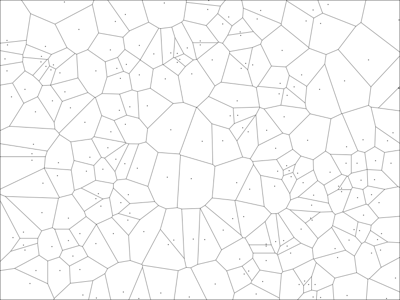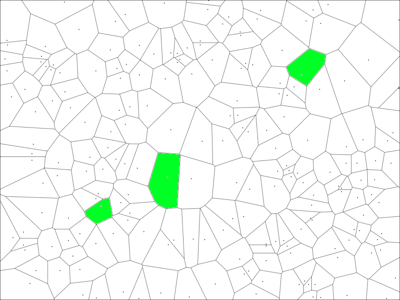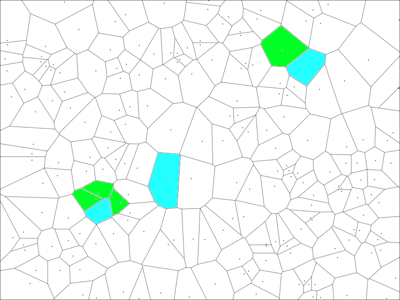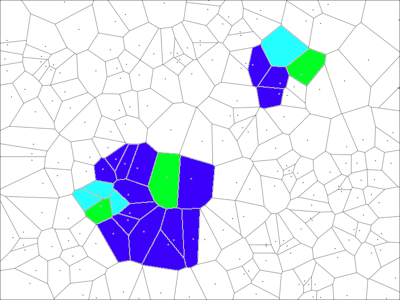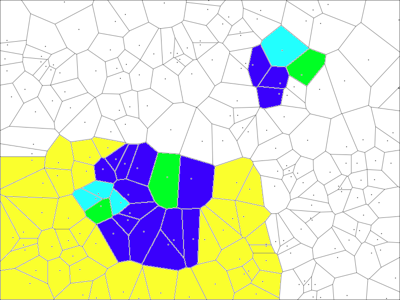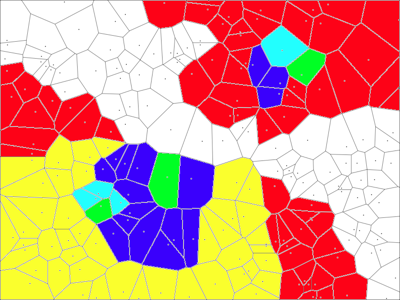Difference between revisions of "Better Maps/Polygon Maps"
Jump to navigation
Jump to search
(Created page with "= Conceptual Overview = The purpose of this is to generate a ''bottom-up'' system of regions, duchies, realms, etc. So we start from the lowest reasonable element and build up. ...") |
|||
| Line 21: | Line 21: | ||
The middle estate only controls one place, but it's a pretty large place. The two other estates control several places. So in the example bottom-left, you have the place X which also rules the other three nearby places. | The middle estate only controls one place, but it's a pretty large place. The two other estates control several places. So in the example bottom-left, you have the place X which also rules the other three nearby places. | ||
| + | |||
| + | A knight can only control places that border his residence, so an estate is always a continuous area. This also puts a size limit on estates. | ||
</td><td>[[Image:MapConcept_Estates.png]]</td></tr> | </td><td>[[Image:MapConcept_Estates.png]]</td></tr> | ||
| Line 29: | Line 31: | ||
In our example, the two left-most estates belong to the same region, so they are now part of the same hierarchy, and their knights share a common lord. If in our example the leftmost estate is the region "capital", then the other estate would be its vassal. | In our example, the two left-most estates belong to the same region, so they are now part of the same hierarchy, and their knights share a common lord. If in our example the leftmost estate is the region "capital", then the other estate would be its vassal. | ||
</td><td>[[Image:MapConcept_Regions.png]]</td></tr> | </td><td>[[Image:MapConcept_Regions.png]]</td></tr> | ||
| + | |||
| + | <tr><td valign="top"> | ||
| + | = Baronies, Duchies, etc = | ||
| + | Regions can band together into higher-level entities. There is no theoretical limit to the depth of this hierarchy, so several regions could form a barony, several baronies a duchy, several duchies a... - on a practical level, one or two layers is probably the maximum that will work. | ||
| + | |||
| + | This layer is optional. In our example on the right, the other regions belonging to the same duchy as our examples are marked in yellow. The top-right region does not belong to a barony/duchy/etc while the lower-left region (containing our two example estates there) does. | ||
| + | |||
| + | These intermediate layers mainly serve as vehicles for player creativity. They make it possible to create different kinds of realms, with flat or deep hierarchies, with intricate systems or simple ones. This layer serves as the foundation of pretty much any imaginable feudal system that players want to come up with. | ||
| + | </td><td>[[Image:MapConcept_Duchies.png]]</td></tr> | ||
| + | |||
| + | <tr><td valign="top"> | ||
| + | = Realms = | ||
| + | At the top of the hierarchy stands the '''realm'''. This is a generic term for empires, kingdoms and the like, but also for independent baronies, regions or even estates. The definition is simple: Anything that does not have anything else above it in the hierarchy is a realm. | ||
| + | |||
| + | Realms are marked in red to the right. To make the example clearer, the two realms in our example do not touch, though in the real game they usually would. | ||
| + | |||
| + | </td><td>[[Image:MapConcept_Realms.png]]</td></tr> | ||
</table> | </table> | ||
(to be continued, please do not edit) | (to be continued, please do not edit) | ||
Revision as of 13:49, 22 November 2010
Conceptual Overview
The purpose of this is to generate a bottom-up system of regions, duchies, realms, etc. So we start from the lowest reasonable element and build up.
Walkthrough
(to be continued, please do not edit)
